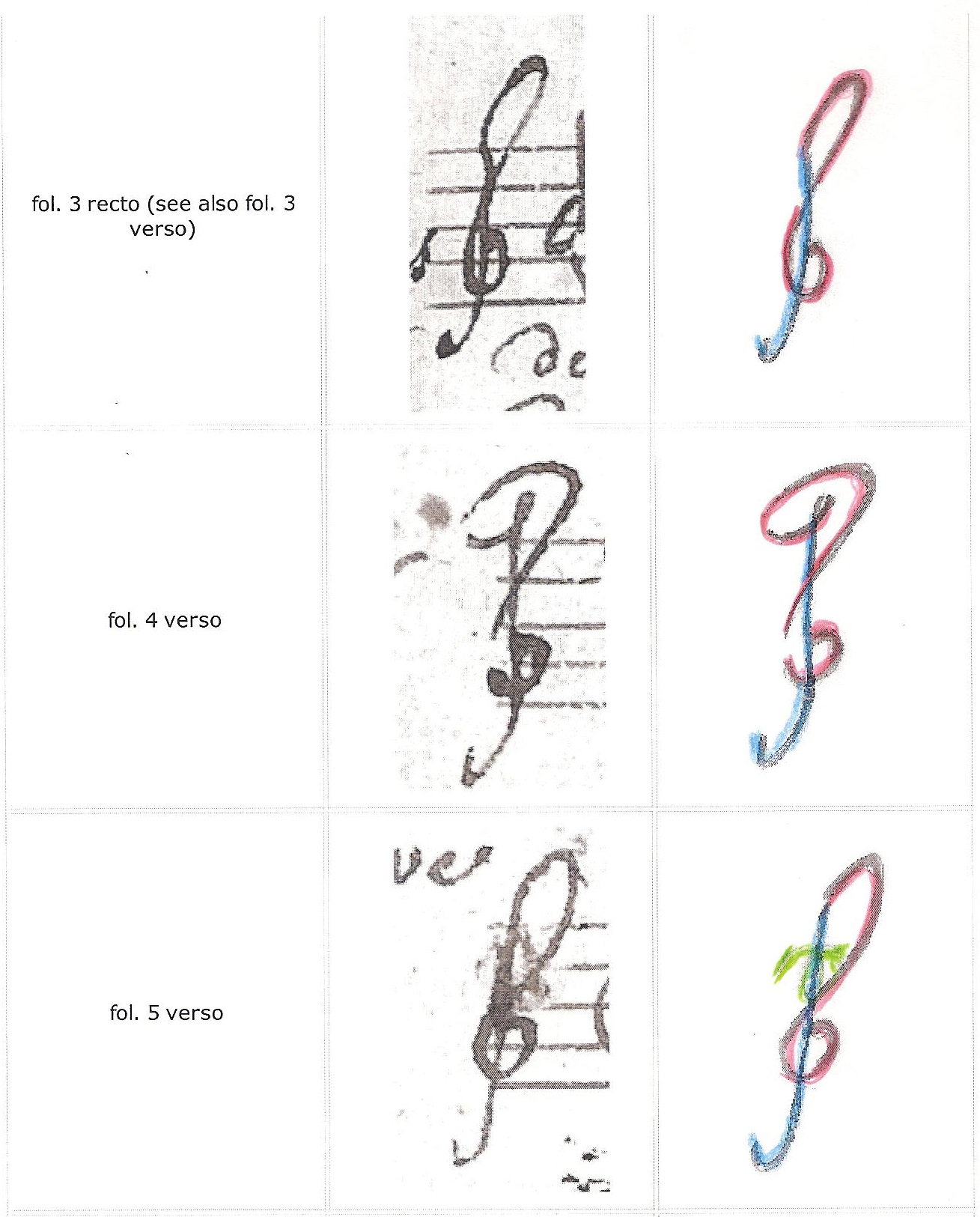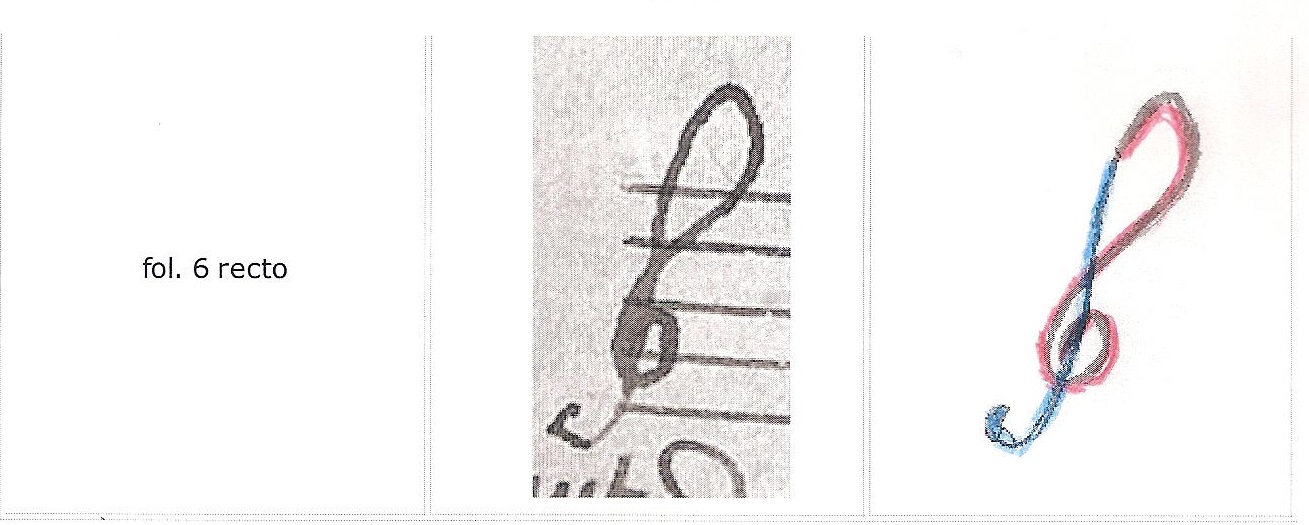 The
Ranums'
The
Ranums'
Panat Times
Volume 1, redone Dec. 2014
Charpentier's reworked G clefs
I have been asked whether the aberrant G clefs in Charpentier's autograph manuscript "XLI," are yet another form of G clef, a transitional one that he used before moving definitively to the final G clef (G-3) that predominates in the autograph.
I am convinced that is not the case. Having asked myself that very same question, while I was at the Lilly Library I made a careful examination of the clefs shown below. I discerned a consistent pattern that was perhaps a bit easier to see on the original than on the images reproduced here. This is the pattern to which I am referring: when Charpentier committed a lapsus and wrote a G-2 clef instead of a G-3 clef, he added the curving vertical line so that the defective clef would resemble as much as possible the new G-3 clef he had decided to use henceforth.
To evaluate the merits of the drawings below, it is essential to remember that in his autograph scores, Charpentier's G-2 clefs are not always consistent in a given piece. That is, sometimes the top curve is very wide, at times it can be rather narrow. The same inconsistency can be seen in the illustrations below, which come from manuscript "XLI."
In the drawing in the right-hand column, the initial G-2 clef is shown in red, and the vertical line that Charpentier added is shown in blue. On folio 5 verso he made a double error: first he drew his typical F clef, (shown in green), then smudged it with his finger in an effort to erase it; after that, he drew the G clef — but it was the wrong type. He therefore repaired it by adding the curved vertical stroke.


